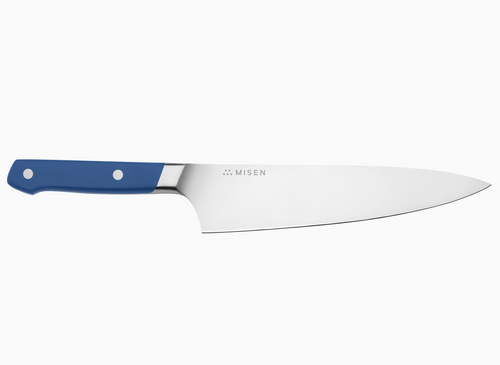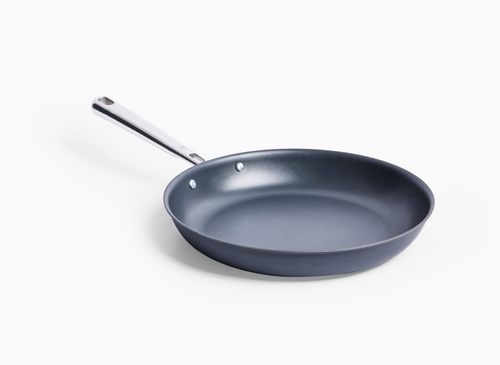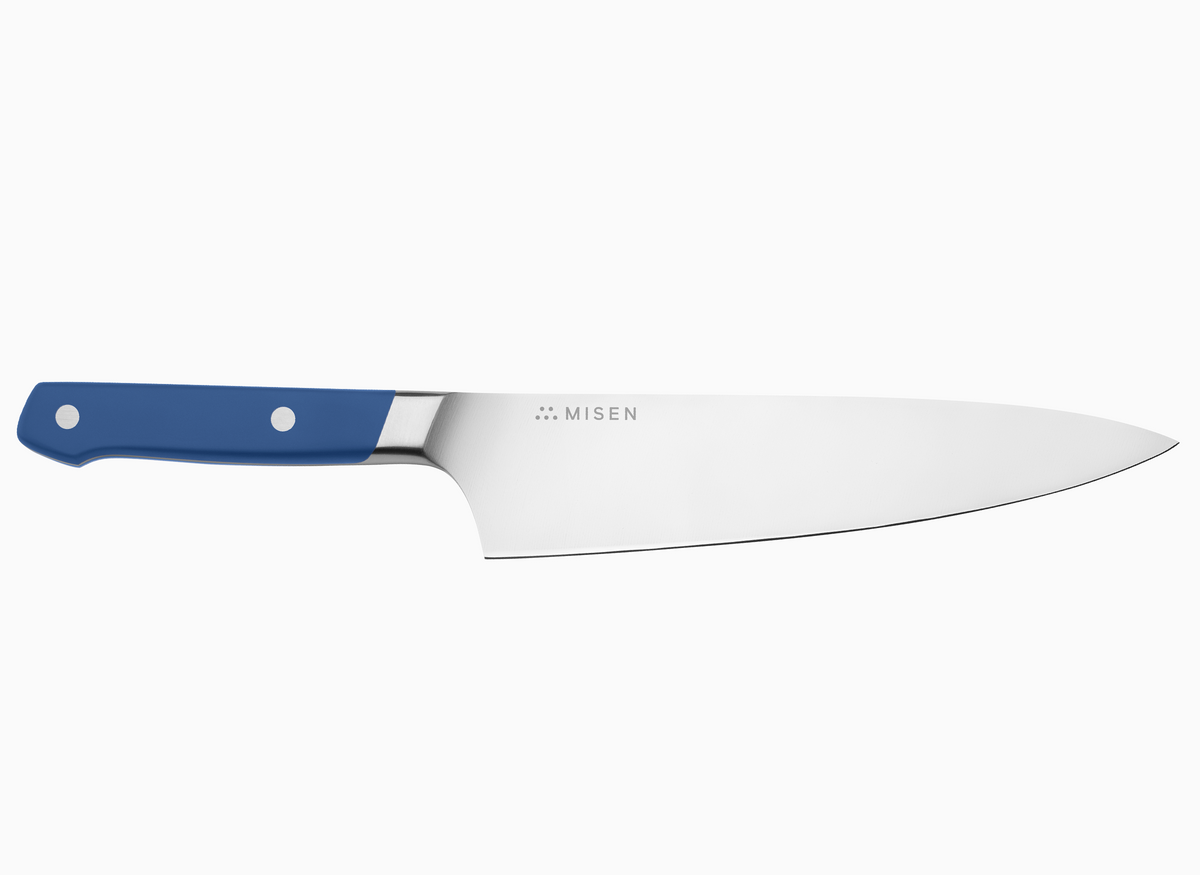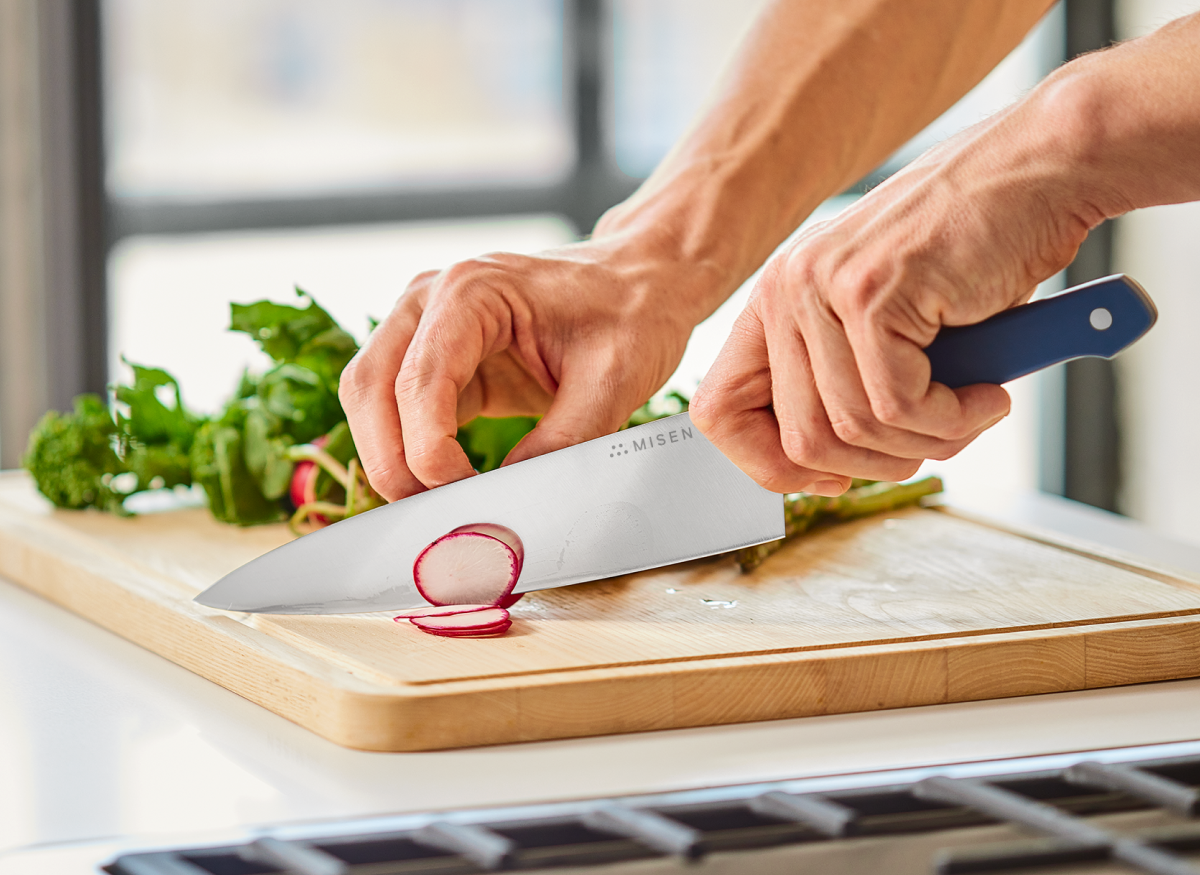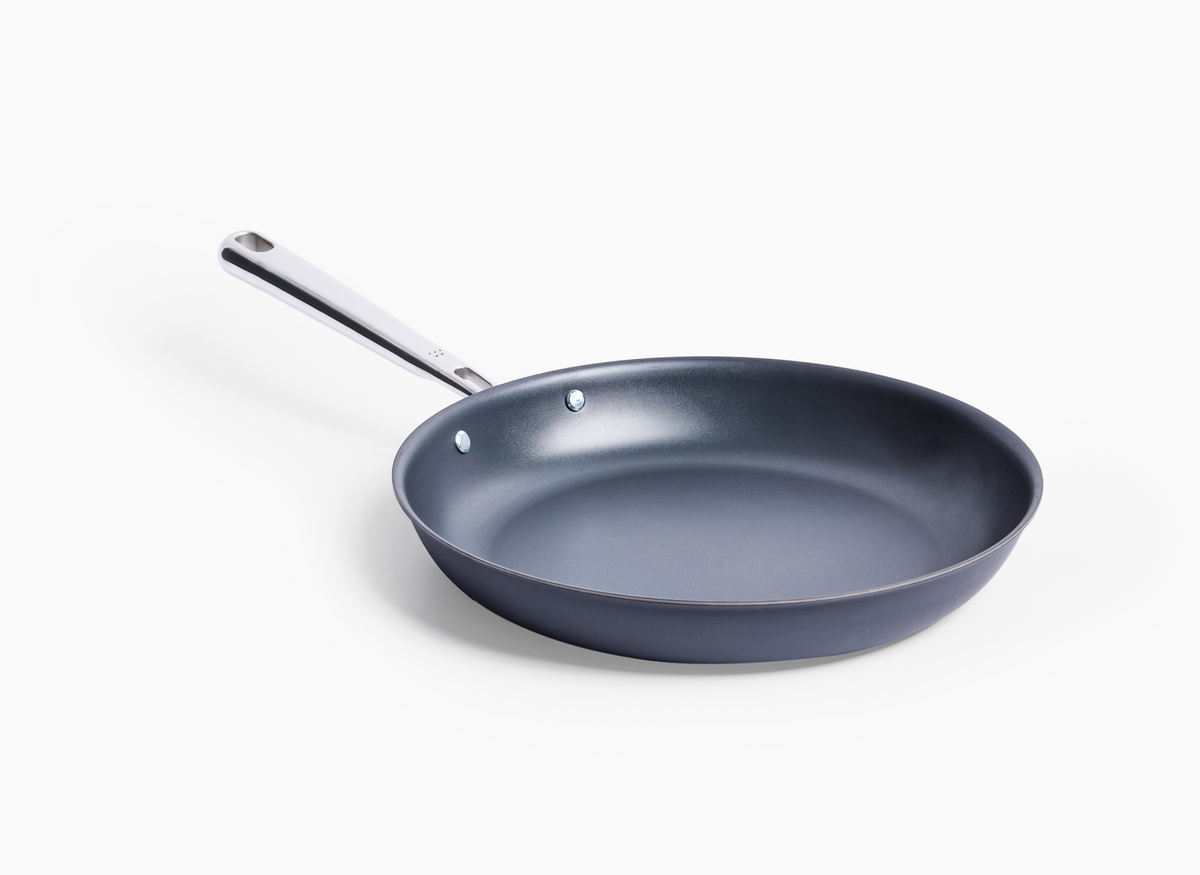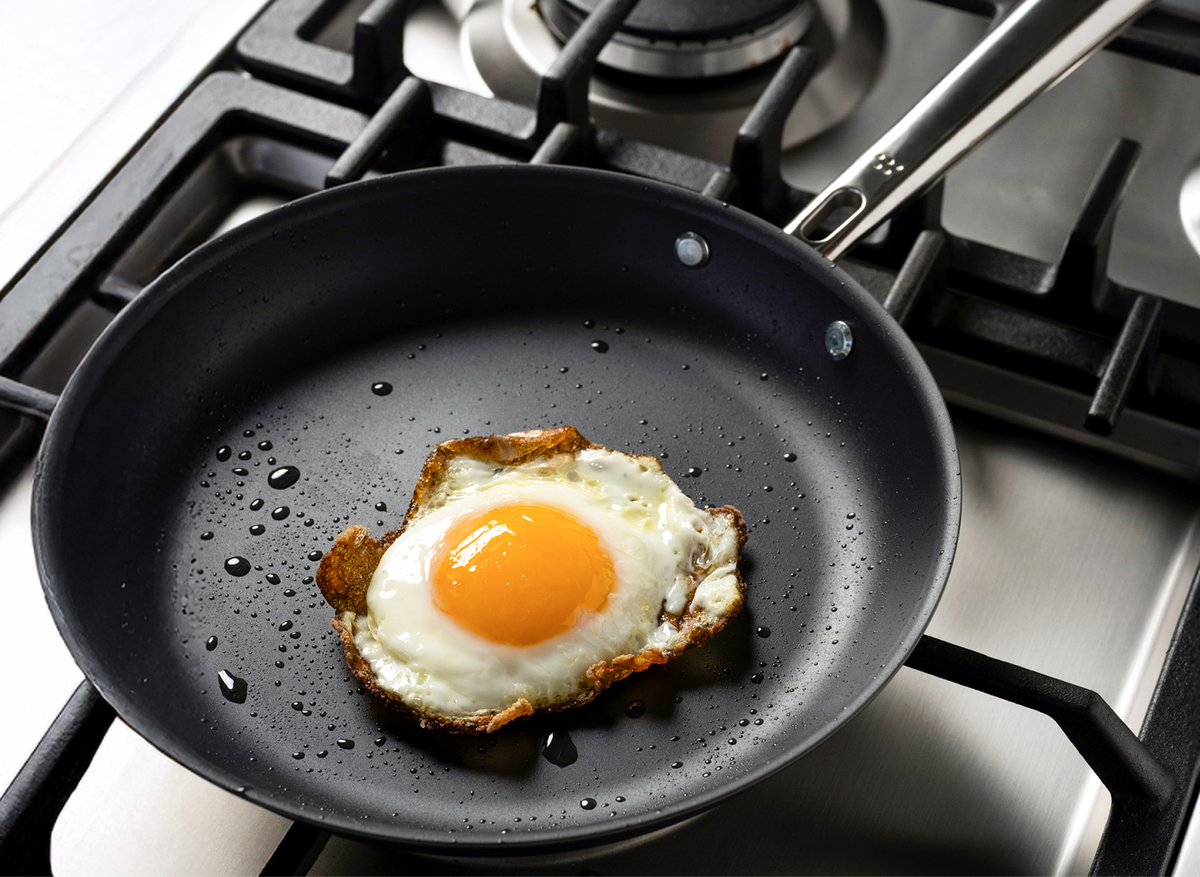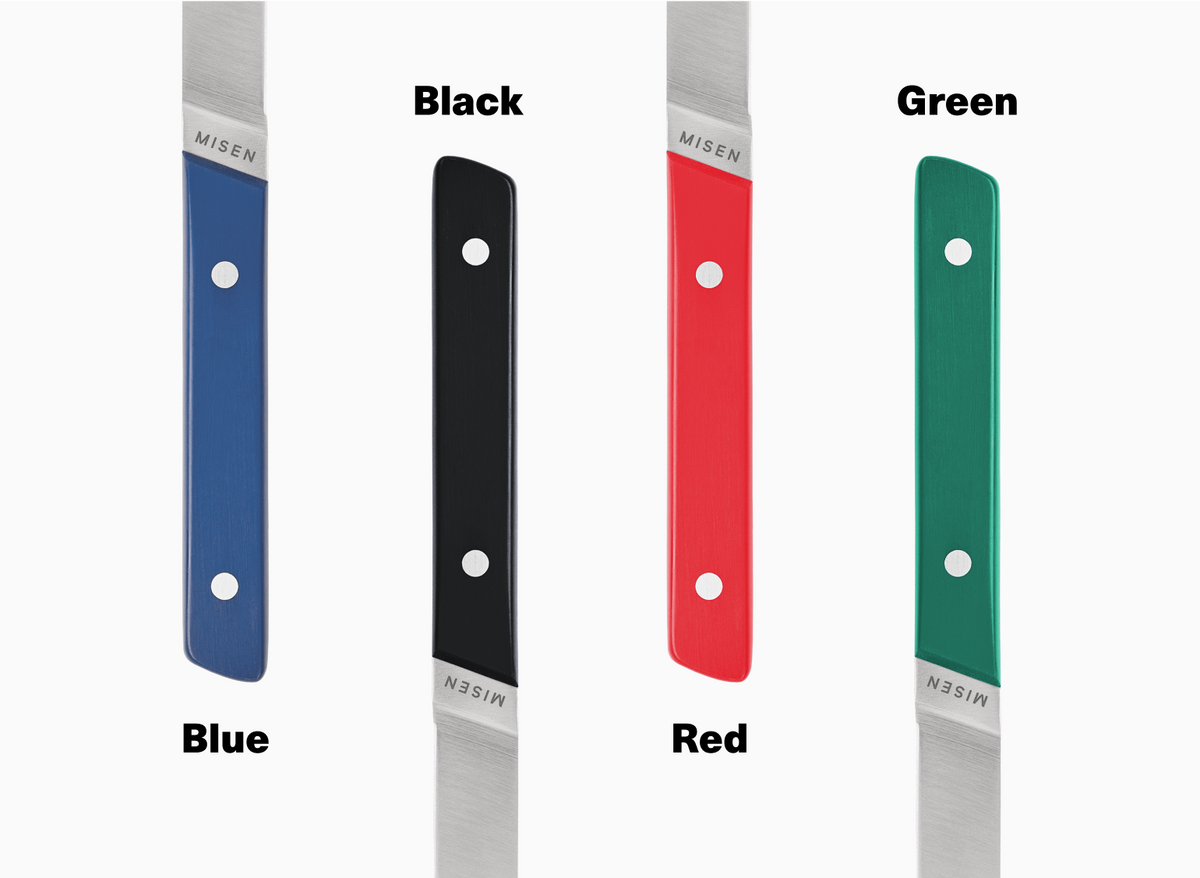What Is Borosilicate Glass? Exploring Composition, Properties, and Applications

Introduction
The Growing Popularity of Borosilicate Glass Products
Borosilicate glass is experiencing rapid market growth, with global revenue expected to reach USD 4,700 million by 2035, growing at a CAGR of 6.8% from USD 2,350 million in 2025 [1]. This expansion is driven by several key factors, including increased demand for pharmaceutical packaging, laboratory equipment, and sustainable alternatives to plastic. The material currently comprises 38% of the specialty glass market, highlighting its crucial role in applications requiring durability and chemical stability [3]. The pharmaceutical sector particularly relies on borosilicate glass, with Type I borosilicate glass dominating 75% of pharmaceutical glass packaging due to its superior chemical resistance [3]. Environmental concerns are also fueling adoption, as consumers and industries shift away from single-use plastics toward recyclable, non-toxic materials. For example, Coca-Cola India reported that 70% of their additional 500 million bottles sold were returnable glass bottles, demonstrating the growing preference for sustainable packaging solutions [2]. Major manufacturers are responding to this demand by expanding production capabilities and developing innovative applications, particularly in regions like North America where pharmaceutical packaging and scientific research infrastructure drive significant market share [1].
Brief Overview of What Makes Borosilicate Glass Special
Borosilicate glass stands apart from conventional glass through its unique molecular structure and superior physical properties. By incorporating boron trioxide alongside silica as main glass-forming constituents, borosilicate glass achieves exceptional thermal shock resistance with a thermal expansion coefficient as low as 3.2 x 10-6 1/K [4]. This allows it to withstand rapid temperature changes without cracking or warping. The material also demonstrates superior chemical durability, with testing showing it degrades ten times more slowly than regular soda-lime glass in both acidic and alkaline environments [5]. Beyond thermal and chemical resistance, borosilicate glass offers excellent mechanical strength, with a Shear modulus of 26.5-27 GPa and Knoop hardness of 400-480 at 20°C [6]. These properties make it ideal for demanding applications in laboratories, kitchens, and industrial settings where regular glass would fail.
Why Understanding Borosilicate Glass Matters for Consumers and Industries
Knowing what makes borosilicate glass special helps you make smarter choices - whether you're selecting laboratory equipment, choosing kitchenware that can go from freezer to oven, or looking for sustainable alternatives to plastic. As we've seen, this remarkable material combines superior thermal resistance with exceptional durability, making it invaluable across industries from pharmaceuticals to aerospace. For home cooks, understanding these properties means knowing why certain glassware won't shatter when you pour hot liquids into it or transfer it between temperature extremes. The same characteristics that make borosilicate essential for scientific research also make it perfect for everyday kitchen use. As sustainability becomes increasingly important, borosilicate glass stands out as a recyclable, non-toxic option that lasts for years. Its expanding applications now include cutting-edge technologies like 3D glass printing and spacecraft heat shields, showing how this century-old innovation continues to shape our future. Whether you're a scientist, chef, or conscious consumer, understanding borosilicate glass empowers you to choose products that deliver lasting performance and value.
The Science Behind Borosilicate Glass: Composition and Structure
Borosilicate glass contains approximately 80% silica and 13% boron trioxide, creating a molecular structure that delivers exceptional thermal and chemical resistance.
What Is Borosilicate Glass? Core Definition and Classification
Borosilicate glass combines silica and boron trioxide as its main glass-forming constituents, creating a material with exceptional thermal and chemical properties [9]. First developed by German glassmaker Otto Schott in the late 19th century, this specialized glass contains approximately 80% silica, 13% boric oxide, 4% sodium or potassium oxide, and 2-3% aluminum oxide. The material falls into distinct classifications based on its oxide composition, with the most common commercial variant being Type I, Class A - a low-expansion borosilicate glass that meets strict laboratory standards [10]. This classification system helps ensure consistent performance across applications, whether you're using laboratory equipment or high-quality cookware in your kitchen. The glass's unique molecular structure enables it to withstand temperature differentials of about 330°F without fracturing, making it significantly more resilient than conventional glass options.
Chemical Composition Breakdown: Silica, Boron Oxide, and Other Elements
Borosilicate glass achieves its distinctive properties through a precise blend of chemical elements. As mentioned above, the core composition creates a unique molecular structure that enables exceptional thermal and chemical resistance. The amount of boric oxide plays a crucial role - staying within the optimal 13% range maintains high chemical resistance, while exceeding 15% reduces durability. Different formulations exist for specific applications, including a variant containing 75% silica and 8-12% boric oxide with up to 5% alkaline earth metals and alumina for slightly softer glass properties [11]. Another specialized composition uses 65-70% silica and 15-25% boric oxide to achieve lower softening points and enhanced electrical insulation, though this higher boric oxide content trades off some chemical resistance for other benefits.
Molecular Structure: How Boron Changes Glass Properties
Borosilicate glass achieves its unique properties through a distinct molecular network structure. The incorporation of boron trioxide alongside silica creates something special - the boron atoms form different structural units that interconnect with silicon-oxygen bonds, enhancing the glass's thermal and chemical stability. Think of it like a three-dimensional web where each connection point adds strength and flexibility. The molecular architecture also includes smaller amounts of sodium or potassium oxide and aluminum oxide, which help stabilize this network. This unique structural arrangement results in a significantly lower thermal expansion coefficient (3.3 × 10-6 K-1) compared to conventional soda-lime glass. In practical terms, this means your borosilicate items can handle extreme temperature changes that would shatter regular glass. The network structure also creates distinct ring formations of silicon, boron and phosphorus atoms that contribute to the material's mechanical properties and chemical durability [12].
Comparing Borosilicate to Soda-Lime and Other Common Glass Types
Soda-lime glass dominates 90% of manufactured glass products, while borosilicate serves specialized applications requiring superior performance [13]. The key difference? Borosilicate includes boron trioxide, giving it a higher silica content (80% versus soda-lime's 69%) [14]. This seemingly small change creates remarkable advantages - borosilicate demonstrates ten times better chemical resistance than soda-lime glass in both acidic and alkaline environments, particularly above 134°C [13]. For thermal shock resistance, borosilicate's expansion rate is approximately one-third that of soda-lime glass, which explains why you can move borosilicate items from freezer to oven without worry [14]. The material also ranks higher in hardness (7.5 versus 6 on the Mohs scale) while maintaining a lower density due to boron's lightweight nature [14]. Understanding these differences helps you make informed choices - whether you're selecting durable cookware for your kitchen or choosing the right glass storage containers. While soda-lime glass works perfectly for windows and everyday bottles, borosilicate excels where performance truly matters [13].
Distinctive Properties That Define Borosilicate Glass
Borosilicate glass withstands temperature differentials up to 330°F and degrades ten times slower than regular glass in chemical environments.
Superior Thermal Resistance and Low Coefficient of Expansion
Borosilicate glass demonstrates exceptional thermal resistance with a coefficient of thermal expansion of just 3.3 × 10-6/°C - approximately one-third that of ordinary soda-lime glass [8]. This low expansion enables the material to withstand temperature differentials of up to 330°F (166°C) without fracturing, compared to soda-lime glass which fails at temperature changes of only 100°F [8]. The glass maintains its mechanical strength up to its strain point, allowing safe operation at temperatures up to 250°C when not subjected to rapid temperature changes [15]. Under normal conditions, borosilicate glass can safely accommodate sudden temperature shifts of up to 120°C, though the exact thermal shock resistance depends on factors like wall thickness and existing stresses [15]. This superior thermal performance stems from its unique molecular structure, with approximately 80% silica and 13% boric oxide creating interconnected networks that enhance thermal stability [8]. The material's low thermal conductivity of 1.0 Kcal/hr,m°C helps maintain consistent temperatures across its surface [15].
Exceptional Chemical Durability and Inertness
Borosilicate glass features a non-porous surface that prevents absorption of residues and remains inert to most materials and chemicals. This characteristic stops unwanted compounds from leaching into samples while preventing contamination during experiments or storage [16]. The glass resists corrosion from most acids, alkalis in moderate concentrations, salts, and organic substances. However, certain limitations exist - hydrofluoric acid can cause significant damage even in trace amounts, while phosphoric acid and hot caustic solutions like sodium hydroxide may cause etching at elevated temperatures despite being safe when cold [16]. The low alkali content in borosilicate's molecular structure contributes to its exceptional chemical durability by reducing mobile ions that could react with substances [17]. This chemical stability and minimal extractable profile make it crucial for pharmaceutical applications where even trace contamination could compromise results [17]. The material's inertness helps maintain product quality during formulation, mixing, and storage by minimizing the risk of unwanted reactions or leaching that could affect safety [17].
Mechanical Strength and Impact Resistance Characteristics
Borosilicate glass demonstrates impressive mechanical strength characteristics, with Vickers hardness values ranging from 5.8 to 6.2 GPa in typical compositions [18]. The material's unique molecular structure enables superior crack initiation resistance, increasing from 4.9 to 8.1 N when properly manufactured [18]. Fracture toughness values typically range from 0.85 to 1.09 MPa⋅m1/2, with the exact values depending on composition and processing [18]. When used as a coating on other materials like zirconia, borosilicate glass can enhance the substrate's mechanical properties - for example, increasing flexural strength by approximately 19% compared to uncoated surfaces [19]. This improvement stems from boron concentrations around 3% enhancing the elastic modulus and hardness of silicate glasses [19]. However, the material's impact resistance has limitations - when subjected to ballistic impacts, borosilicate glass exhibits complex damage patterns including Hertzian cracks, bulk wave generation, and surface wave interactions [20]. The glass's response to impact involves multiple mechanisms including projectile dwelling on the strike face, crack formation, and wave propagation through the material [20].
Optical Properties: Clarity, Transparency, and Light Transmission
Borosilicate glass demonstrates exceptional optical properties that make it ideal for precision applications. The material features low dispersion with Abbe numbers around 65 and relatively low refractive indices ranging from 1.51-1.54 across the visible spectrum [8]. This combination of properties makes it particularly valuable for optical instruments - the most commonly used variant for instrument lenses is Schott BK-7, a highly refined borosilicate crown glass also designated as 517642 glass after its 1.517 refractive index [8]. The glass provides excellent light transmission while maintaining pristine surface quality, making it essential for technical applications requiring high light transmission [8]. Its optical clarity has led to widespread use in flashlights and lighting devices, with manufacturers utilizing borosilicate glass to increase light transmittance compared to plastics and lower-quality glass options [8]. The material's unique molecular structure also enables UV light transmission down to 180 nm in specialized formulations, combining the optical benefits of both borosilicate and quartz glass [8].
Manufacturing Process and Historical Development
Otto Schott's 1887 invention of borosilicate glass revolutionized scientific research and created a material that melts at 1,650°C - requiring entirely new manufacturing techniques.
The Birth of Borosilicate Glass: Historical Context and Invention
Borosilicate glass emerged through the pioneering work of German glassmaker Otto Schott in the late 19th century in Jena, Germany. In 1887, Schott began developing specialized glasses for technical applications by incorporating boric acid into the glass composition, creating a material with extraordinary heat resistance, strong chemical durability, and exceptional resistance to temperature changes [21]. This innovation first found practical use in technical thermometers in 1891, enabling temperature measurements up to 500°C for the first time. The material's unique properties quickly led to widespread adoption - laboratory glassware made from borosilicate glass catalyzed global scientific progress from 1893, while borosilicate lamp cylinders revolutionized gas incandescent lighting technology from 1895 [21]. By 1911, FIOLAX® borosilicate glass tubes had become the industry standard for pharmaceutical packaging [21]. The glass's commercial success expanded significantly after Corning Glass Works introduced Pyrex in 1915, making the term synonymous with borosilicate glass in English-speaking regions [8]. The material's development represented a significant manufacturing challenge, as borosilicate glass melts at approximately 1,650°C - much higher than ordinary silicate glass - requiring new industrial production techniques [8].
Modern Manufacturing Techniques and Production Methods
Modern borosilicate glass manufacturing starts with carefully measured raw materials, as detailed in the composition section above. These ingredients melt at extremely high temperatures around 1,650°C - that's nearly 3,000°F, much hotter than your oven could ever reach [22]. Once melted, the glass gets shaped through various methods like floating, tube drawing, or molding - similar to how different cooking techniques create different results in your kitchen [8]. For display glass applications, manufacturers use either the fusion technique, where molten glass flows over trough walls to create pristine surfaces, or the float technique using molten tin baths - though the latter requires additional polishing [23]. Throughout production, quality checks ensure everything meets standards - from composition to thermal resistance testing, much like how careful temperature control ensures perfect results when cooking [22]. Many facilities now incorporate sustainability practices like using recycled glass cullet, optimizing energy usage, and developing formulations with lower environmental impact [22]. Working with borosilicate requires specialized torches since the glass only becomes pliable above 538°C (1,000°F). Craftspeople have adapted welding techniques to handle these intense temperatures - a reminder of why this material performs so well with the high heat of your stovetop [8].
Quality Control Standards in Borosilicate Glass Production
Quality control in borosilicate glass manufacturing involves rigorous testing and inspection protocols to ensure products meet strict standards. Modern quality control uses advanced cameras and automated systems to spot any surface flaws - because even tiny imperfections can affect performance [25]. To test thermal shock resistance, samples face extreme temperature swings - heated to 300°C then rapidly cooled with water. It's far more extreme than anything you'd do in your kitchen, ensuring the glass can handle going from freezer to oven without breaking [24]. Chemical stability analysis examines how aluminum content affects dissolution rates and long-term performance, with lower aluminum levels showing faster initial dissolution but improved stability through gel formation [24]. The industry follows standardized Acceptable Quality Limit (AQL) sampling methods, with critical defects requiring zero tolerance, major defects limited to 2.5%, and minor defects acceptable up to 4.0% under MIL STD 105E guidelines [25]. Throughout production, manufacturers monitor composition consistency, inspect shapes and sizes, test thermal resistance capabilities, and conduct physical/chemical verification to maintain quality standards [22].
Evolution from Laboratory Innovation to Widespread Commercial Use
Borosilicate glass evolved from a specialized laboratory material to widespread commercial use through several key developments. Following Schott's breakthrough, borosilicate glass quickly found its way into everyday life. Technical thermometers in 1891 could suddenly measure up to 500°C, while laboratory equipment and gas lamp cylinders followed shortly after [26]. A major shift occurred in 1915 when Corning Glass Works introduced Pyrex, making borosilicate glass accessible to American consumers [27]. The material's commercial expansion accelerated during World War I when the U.S. government seized German glass patents under the Trading with the Enemy Act, allowing American companies to access previously protected formulations [27]. This led to rapid diversification of applications - from laboratory equipment to consumer cookware and automotive parts. By 1919, over 4.5 million pieces of Pyrex ovenware had found their way into American kitchens - proof that this "scientific" glass had become an everyday essential [27]. The success continued as manufacturers developed new shapes and uses to keep consumers interested. They'd learned from railroad signal glass that making products too durable could actually limit sales - but in the kitchen, that durability became a selling point [27].
Diverse Applications Across Multiple Industries
From laboratory beakers to spacecraft heat shields, borosilicate glass serves critical roles across industries thanks to its unique combination of thermal, chemical, and optical properties.
Laboratory and Scientific Applications: Why Researchers Depend on Borosilicate
Borosilicate glass has become the go-to material for laboratory equipment, and for good reason. Scientists depend on this specialized glass because it won't crack when moved from freezer to heat source - a daily reality in busy labs [28]. The material stays chemically neutral when exposed to acids, bases, and other reactive substances, keeping samples pure and results accurate [28].
You'll find borosilicate glass in virtually every piece of lab equipment - beakers, flasks, pipettes, burettes, condensers, and chromatography columns [28]. Its crystal-clear transparency lets researchers monitor reactions in real-time, catching important changes as they happen. While some specialized applications call for fused quartz (think extreme heat or UV work), borosilicate handles the vast majority of laboratory needs [8].
The pharmaceutical industry particularly relies on borosilicate glass for drug packaging. From vials to pre-filled syringes, ampules to dental cartridges, this material ensures medications stay stable and uncontaminated [8]. Its resistance to ion migration means nothing leaches in or out - exactly what you need when purity matters most [28].
Kitchen and Culinary Uses: From Bakeware to Storage Containers
If you've ever hesitated before putting a glass dish from fridge to oven, you understand why borosilicate glass has become a kitchen favorite. This specialized glass handles temperature swings that would shatter regular glass - we're talking freezer to 450°F oven without a problem [29]. That's why you'll find it in quality baking dishes, casseroles, and food storage containers.
Unlike some vintage glassware that might contain lead or cadmium, borosilicate glass is completely safe for food contact. It's microwave-friendly, dishwasher-safe, and won't absorb food odors or stains thanks to its non-porous surface [30]. Yes, it costs more than regular glass, but home cooks appreciate not having to replace shattered dishes or worry about chemical leaching [29].
For those seeking similar durability in cookware, quality stainless steel pans offer comparable longevity and versatility - moving seamlessly from stovetop to oven while providing excellent heat distribution. Whether you choose borosilicate glass for baking or stainless steel for searing, investing in quality kitchen tools pays off in both performance and peace of mind.
Industrial Applications: Lighting, Electronics, and Specialized Equipment
Industrial applications showcase borosilicate glass at its most impressive. In lighting, it's the material that keeps high-intensity discharge lamps - think stadium lights and street lamps - from failing under extreme heat [31]. Its precise optical properties (low dispersion, consistent refractive index) make it essential for scientific instruments and specialized mirrors that need to reflect infrared light while transmitting visible wavelengths [32].
The electronics industry couldn't function without borosilicate glass. Semiconductor manufacturers use it for MEMS (microelectromechanical systems), bonding silicon wafers to precisely etched glass substrates [8]. You'll also find it in sight glasses on industrial equipment - those windows that let operators check fluid levels or monitor processes without opening sealed systems [32].
Even more dramatically, borosilicate glass protects spacecraft. Both NASA's Space Shuttle and SpaceX's Starship use borosilicate coatings on their heat shields to survive re-entry temperatures [8]. Back on Earth, solar thermal collectors rely on borosilicate tubes to capture and retain heat efficiently, proving this glass isn't just tough - it's helping build a sustainable future [8].
Artistic and Decorative Uses in Contemporary Design
Contemporary artists have discovered that borosilicate glass opens creative doors that traditional glass keeps firmly shut. The material's forgiving nature with temperature changes means artists can work on massive sculptures without worrying about sudden cracks ruining months of work [33].
Pioneer Věra Lišková showed the world what was possible in the 1960s with pieces like 'Anthem of Joy' - a sculpture that seems to capture sound in solid form [34]. Today's artists push even further. Geoffrey Mann heats specific spots while leaving others cool, creating the illusion of sound waves rippling through glass [34]. This selective heating technique simply wouldn't work with regular glass - it would shatter from the stress.
The flameworking revolution belongs to borosilicate. Artists now connect dozens of intricate components into single works, building from the inside out with handheld torches. Susan Plum creates architectural installations this way, while Luke Jerram crafts scientifically accurate glass viruses and molecular structures that require borosilicate's precision and stability [34]. What started as a practical laboratory material has become an artistic medium that makes the impossible possible.
Health, Safety, and Practical Considerations
Borosilicate glass is 100% recyclable, BPA-free, and can last decades with proper care - making it both a healthy and sustainable choice for conscious consumers.
Health Benefits: Non-Toxic Nature and BPA-Free Properties
Here's what makes borosilicate glass a smart choice for health-conscious cooks: it's completely free from BPA, lead, phthalates, and other harmful chemicals that can sneak into your food from lesser materials. Unlike plastics that can break down and leach unwanted compounds when heated or left in the sun, borosilicate glass stays chemically stable no matter what you throw at it.
The non-porous surface is another big win - it won't absorb food odors or harbor bacteria like some materials can. That garlic-heavy pasta sauce you stored last week? It won't leave a trace of flavor in your morning smoothie. The glass's exceptional chemical stability means it won't react with acidic foods like tomato sauce or citrus marinades, keeping your food tasting exactly as it should.
This same chemical inertness that makes borosilicate perfect for your kitchen also makes it the go-to choice for laboratories and pharmaceutical companies. When purity matters - whether it's for storing medications or meal prep - borosilicate glass delivers peace of mind.
Safety Features: Thermal Shock Resistance in Real-World Scenarios
As covered in earlier sections, borosilicate glass excels at handling extreme temperature changes - a property that translates into real safety benefits in your kitchen. You can take a dish straight from the freezer to a preheated oven without worrying about dangerous shattering, something that would send regular glass flying into pieces.
In practical terms, this means your borosilicate bakeware can handle the everyday temperature swings of cooking without breaking a sweat. Whether you're reheating leftovers from the fridge or transferring a hot casserole to a cold counter, the glass's thermal stability keeps you safe from unexpected breaks.
This same thermal resilience makes borosilicate essential in professional settings too, from laboratories handling temperature-sensitive samples to pharmaceutical companies storing vaccines that need to go from ultra-cold storage to room temperature quickly.
Environmental Impact and Sustainability Aspects
When it comes to environmental impact, borosilicate glass offers a refreshing alternative to disposable options. Modern manufacturing has come a long way - today's factories use advanced furnaces that cut energy consumption dramatically, with overall energy use in glass production dropping by 70% over the past five decades.
The best part? Borosilicate glass is 100% recyclable without losing any quality. Every piece can be melted down and reformed into new products, creating a true closed-loop system. While recycling rates vary (the EU leads at 70% while the US lags at 30%), the potential for sustainable use is clear.
But here's what really makes borosilicate glass eco-friendly: its durability. Instead of constantly replacing broken dishes or worn-out containers, a quality borosilicate piece can last for years or even decades with proper care. That longevity means less waste, fewer resources consumed, and a smaller environmental footprint over time. It's the kind of sustainable choice that makes sense for both your kitchen and the planet.
Proper Care, Maintenance, and Usage Guidelines
Taking care of borosilicate glass is refreshingly simple - a few smart habits will keep your pieces looking and performing like new for years. Start with the basics: clean your glassware soon after use to prevent stubborn residue buildup. Stick to gentle, non-abrasive cleaners and soft sponges or brushes to protect the surface.
While borosilicate handles temperature changes better than regular glass, it's still smart to avoid extreme thermal shock. Let hot dishes cool a bit before washing, and don't take frozen containers straight to a hot oven - give them a few minutes to adjust.
Storage matters too. Keep pieces separated to prevent chips from contact, and take off rings or bracelets when handling to avoid accidental scratches. Never use metal utensils that could score the surface - opt for wood, silicone, or plastic instead.
Before each use, give your glassware a quick visual check for any chips or cracks. Even tiny imperfections can compromise the glass's strength. With this simple care routine, your borosilicate pieces will deliver reliable performance meal after meal - whether you're using them for baking, storage, or serving. For those who appreciate quality materials in their kitchen, stainless steel cookware offers similar durability with its own unique benefits.
- Borosilicate glass contains approximately 80% silica and 13% boron trioxide, creating exceptional thermal shock resistance (up to 330°F temperature differentials)
- The material degrades ten times slower than regular soda-lime glass in chemical environments and maintains a coefficient of thermal expansion three times lower
- Otto Schott invented borosilicate glass in 1887, revolutionizing laboratory equipment and creating a USD 4,700 million market by 2035
- Applications span from pharmaceutical packaging (75% of market) to spacecraft heat shields, laboratory equipment, and kitchen cookware
- Borosilicate glass is 100% recyclable, BPA-free, non-porous, and chemically inert - making it ideal for food storage and scientific applications
- Manufacturing requires extreme temperatures (1,650°C) and strict quality control, with zero tolerance for critical defects
- Proper care includes avoiding extreme thermal shock, using non-abrasive cleaners, and checking for chips or cracks before use
Want to dive deeper into the science and applications of borosilicate glass? Here are all the sources we referenced to bring you this comprehensive guide:
- https://www.futuremarketinsights.com/reports/borosilicate-glass-market
- https://www.safecoze.com/blog/sustainable-high-borosilicate-glass-trends/
- https://www.reanin.com/reports/global-borosilicate-glass-market
- https://boropuff.com/eu/en/blog/materials/borosilicate-vs-regular-glass
- https://www.ljstar.com/resources/glass-comparison/?srsltid=AfmBOorJ_UpDujVlCGGrbj0LJbeBU4J-hN_T91NJNPvK39MPlaZLlPil
- https://www.quora.com/What-are-the-properties-of-borosilicate-glass
- https://www.schott.com/en-gb/expertise/materials/borosilicate-glass
- https://en.wikipedia.org/wiki/Borosilicate_glass
- https://www.borosilscientific.com/a-comprehensive-guide-to-borosilicate-glass-understanding-types-composition-and-properties/
- https://www.astm.org/e0438-92r18.html
- https://www.elantechnology.com/glass/glass-materials/borosilicate-glasses/
- https://www.sciencedirect.com/science/article/pii/S2590159122000383
- https://www.ljstar.com/resources/glass-comparison/?srsltid=AfmBOoqceD0vGrSz5kcIiZfr26Vgrw883rIeIax-T5R0qADGA-0GUHVb
- https://www.westlab.com/blog/what-is-the-difference-between-soda-lime-glass-and-borosilicate-glass
- https://goelscientific.com/borosilicate-glass/?srsltid=AfmBOory_khnQ13tfCvOAZyeW1llejo9HdN-2iOIJWrUNbbB2Htn0MZv
- https://www.labdepotinc.com/articles/what-is-borosilicate-glass-properties-benefits-and-best-practices-in-the-lab.html?srsltid=AfmBOooLCvfQtiEBoeVHtvE5_rVqg8uI2jShnXe8gyFBIZGr1TWikT1X
- https://www.dwk.com/na/knowledge-hub/blogs/why-borosilicate-glass-properties-make-all-the-difference-in-pharma-labs
- https://ceramics.onlinelibrary.wiley.com/doi/full/10.1111/jace.20099
- https://pmc.ncbi.nlm.nih.gov/articles/PMC11376643/
- https://www.sciencedirect.com/science/article/abs/pii/S0734743X09001869
- https://www.schott.com/en-us/about-us/company/history/innovation-history
- https://glassforum.org/what-is-borosilicate-glass/
- https://www.sciencedirect.com/topics/materials-science/borosilicate-glass
- https://www.safecoze.com/blog/high-borosilicate-glass-manufacturing/
- https://slyprc.com/how-borosilicate-glassware-inspected-quality/
- https://www.fumodesign.com/what-is-borosilicate-glass/
- https://www.americanscientist.org/article/the-chemical-history-of-superior-glass
- https://www.scienceequip.com.au/blogs/news/lab-equipment-glassware-why-choose-borosilicate-glass?srsltid=AfmBOop6H4EDbuW8WjJ1zOhJsrZGi_NLGbbDFKUHxYJckNq3Cl595Cw-
- https://www.tubularglass.com/blogs/borosilicate-glass/borosilicate-glass-industry-applications
- https://madeincookware.com/blogs/borosilicate-glass
- https://www.swiftglass.com/borosilicate
- https://www.thomasnet.com/articles/custom-manufacturing-fabricating/borosilicate-glass/
- https://www.schott.com/en-gb/expertise/applications/art-installations-and-glass-constructions
- https://artsandculture.google.com/story/a-new-glass-for-a-new-era-borosilicate-glass-corning-museum-of-glass/YQVRiUs6loaZIw?hl=en
- https://www.glasafe.com/blogs/glasafe-blogs/why-choose-non-toxic-borosilicate-glass-over-regular-glass?srsltid=AfmBOorqRc9Wc1uGr7qk2dCXiGClT3JPFGptVcw4ZCDRbjlJmzuIjNY1
- https://www.ecobud.com.au/our-story/news-blog/healthy-living/what-is-borosilicate-glass?srsltid=AfmBOorbUOvxMgSvKWrmAijraod_TpOzgVkaohPrbUXXUGX93EzR7riX
- https://wondrwood.com/blogs/what-were-working-with/what-is-borosilicate-glass-why-is-it-better-than-regular-soda-lime-glass?srsltid=AfmBOoqsLlvJ9sV8_XKtrWv9CCgqLfE39G20_zeR1EObTBgGWC7oN8Rp
- https://www.safecoze.com/blog/borosilicate-glassware-factory-precision-sustainability/
- https://www.suibosorting.com/glass-sorting-machine/recycling-borosilicate-glass-a-sustainable-approach
- https://www.labdepotinc.com/articles/what-is-borosilicate-glass-properties-benefits-and-best-practices-in-the-lab.html?srsltid=AfmBOori08tUdfE0bjA4z30y_hz2NCFZVhIt4AoWb_23lX3nFvKI7uv7
- https://www.dwk.com/na/technical/care-maintenance-of-laboratory-glassware
- https://www.ultident.com/blog/post/how-to-maintain-your-borosilicate-laboratory-equipment-for-longevity
- https://shopkablo.com/blogs/the-reformist/what-is-borosilicate-glass?srsltid=AfmBOorm4owzJpYc_YSv7ir_7aAK99-98tDpDvtG3eEXprq-KXUZQ5m8
- https://www.ljstar.com/resources/glass-comparison/?srsltid=AfmBOoragl_4ISATcGnrCGMLmZlBQJPffqLQjCSMNguxlVLOiPlGPRWT
- https://www.chemscience.com/blog/borosilicate-glass-vs-soda-lime-glass-understanding-the-differences
- https://vitrumlife.it/en/discovering-borosilicate-glass/
- https://www.datainsightsmarket.com/reports/borosolicate-glass-1816934
- https://www.roetell.com/high-borosilicate-glass-vs-regular-glass/
- https://shopkablo.com/blogs/the-reformist/what-is-borosilicate-glass?srsltid=AfmBOorl9uS1RMiFbW9JLOQKmW8ezaAVMemKzj0L_kJQ2ybhTQUX_z03
